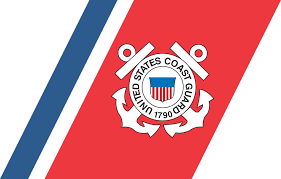When the Baton Rouge gauge reads above 40′, a U.S. Coast Guard Vessel Traffic Service (VTS) Measure is established in accordance with the Navigation Safety Regulations, Code of Federal Regulations Title 33, Subpart 161.11, for Wilkinson Point, Lower Mississippi River (LMR) from Mile 232 Above Head of Passes (AHP) to Mile 237 AHP. This VTS Measure is needed to protect persons and vessels from the potential safety hazards associated with the effects of high water levels on the Lower Mississippi River. This Measure is effective at 6:00 A.M. on Monday, February 24, 2020 with the following provisions:
- All vessels are limited to a max tow size of 30 barges with 300 HP per standard barge and 700 HP per oversize barge for southbound transits within the Wilkinson Point special area. For the purpose of this calculation, barges with dimensions 290′ x 50′ or larger are considered “oversize” while barges with dimensions less than 290′ x 50′ are considered “standard.” If one of the barge dimensions (length or width) meets or exceeds the 290′ x 50′, then the barge is considered “oversize.” Empty barges may be calculated at ½ the horsepower requirements to that of a loaded barge when computing the overall horsepower requirement. Vessels unable to meet the HP requirements must make adjustments to meet the requirements prior to transiting the Wilkinson Point special area. Towing vessels with Z-drive propulsion types may be treated as having a horsepower 20% greater than the engine’s rating for the purpose of this calculation. VTS may on a case-by-case basis approve exceptions up to 400 HP based on conditions and size of tow. A towing vessel with 8400 HP may push a 30-barge tow.
- VTS LMR will manage the vessel queue at the Wilkinson Point special area. Vessels will contact the Vessel Traffic Center via VHF-FM channel 12; and can be hailed using the Call Sign “BATON ROUGE TRAFFIC”. In the event the VTS cannot be reached via radio, they may also be contacted via the 24-hour contact number at (504) 365-2512. VTS will establish “check in/reporting procedures” for down bound tows at MM 255 (Port Hudson Light) and MM 240 (Thomas Point), as well as up bound tows at MM 219 (Sardine Crossing) and MM 226 (Bottom of Baton Rouge Anchorage).
All tows operating between MM 255 to MM 219 will be required to provide a sail plan to the VTS with the following information:
Name of vessel.
Current location.
Vessel type, horsepower, and propulsion type (Z-drive or conventional).
Tow configuration.
Number of loaded barges & number of empty barges (distinguishing oversize and standard).
Number of red flag barges in tow.
- All down bound traffic will transit Wilkinson Point during daylight hours only and will utilize the Towing Assist Vessel (TAV) (min 5000 HP). Vessels pushing more than one loaded barge or two empty barges are required to flank, not steer, Wilkinson point.
- The following exceptions apply only to harbor fleet tows: Vessels pushing four barges or less are not required to utilize the TAV, but must coordinate transits with VTS. Vessels pushing one loaded or two empty barges may transit at night but must coordinate transits with VTS.
- The TAV must meet the southbound vessel no lower than 2000 feet above Wilkinson Point. The TAV will position itself alongside the most appropriate agreed upon location on the barge tow after consultation with the vessel’s captain.
- The TAV will then confirm information of current reaction above, around and below Wilkinson Point.
- The TAV will discuss what the last vessel that transited Wilkinson Point found and continually brief southbound vessels of present position in correlation with the last vessel that transited.
- The TAV will make corrections to the southbound vessel’s positioning if necessary.
- No more than two southbound towing vessels will be allowed below Thomas Point at any time regardless of tow size.
- There will be a LOMRC representative onboard the assist vessel with pilots on scene to ensure safe navigation. The TAV captain/pilot may satisfy this requirement provided they are familiar with this Waterway’s Action Plan and the current MSIB.
- Up bound traffic may transit Wilkinson Point any time during which the queue is empty of down bound traffic. Passenger vessels will have a priority position in the queue.
- Up bound vessels unable to average 3 MPH around Wilkinson Point must use a Private Assist Vessel (PAV).
- Vessels are prohibited from meeting or overtaking other vessels from MM 232 AHP to MM 237 AHP unless cleared by VTS to do so.
- Tows shall be squared off. On tows with five or more barges, there shall be no spiked barges that extend 50′ beyond the head of the tow. VTS may grant exceptions to this requirement on a case-by-case basis based on conditions and the size of tow.
- Tank barges shall be placed in a protected position in the tow makeup (not on the head of the tow or on either outboard string).
- All southbound tows entering Baton Rouge Harbor (Devil’s Swamp) with more than one barge attached shall hire a private assist vessel (PAV) to accompany them into the harbor and contact VTS to enter the queue.
This Marine Safety Information Bulletin supersedes Volume XX Issue 025 and is supplemental to Volume XX, Issue 029 Baton Rouge 40′ and Rising MM 167.5 – 232 Safety Advisory.
For additional information, contact the following:
Vessel Traffic Service Lower Mississippi River: (504) 365-2512 (24 HR), VHF-FM ch 05A, 11, or 12
Coast Guard Baton Rouge Waterways Management: (225) 298-5400 X230
Coast Guard Sector New Orleans Command Center: (504) 365-2200


